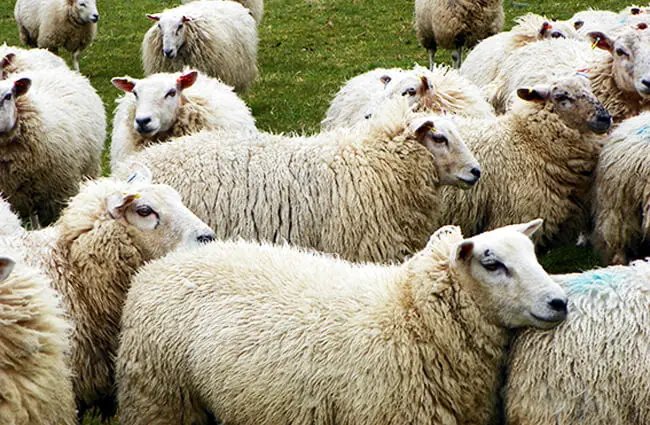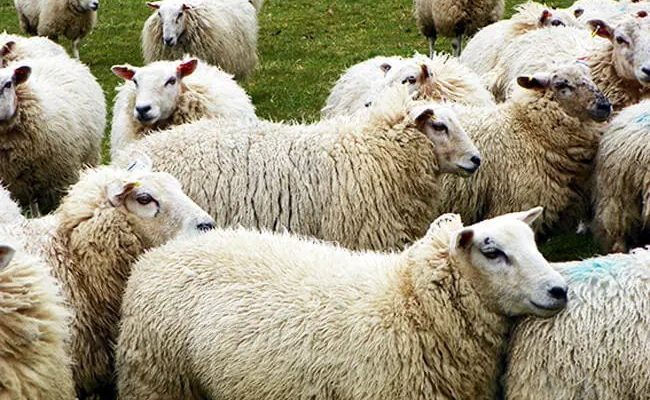
Mountain Habitats: The Rocky Home of Wild Sheep
In rugged terrains, wild sheep thrive, showing us just how resilient they can be. Think about the majestic Rocky Mountains or the steep slopes of the Himalayas. These environments may seem harsh, but various sheep species like the Bighorn Sheep or the Arabian Oryx have made their homes there. Wild sheep have adapted to high altitudes, where they can navigate rocky outcrops with ease.
One of the most fascinating aspects of mountain sheep is their diet. While grazing on grass might be their go-to, in these steep areas, they munch on shrubs and tough plants that can withstand harsh weather. Their thick wool coats provide insulation against chilly winds, allowing them to be comfortable in areas where many animals would struggle.
Threats and Conservation
Unfortunately, mountain habitats come with challenges. As temperatures change and habitats shift, wild sheep are facing new threats. Increasing human encroachment and climate change impact their food sources and migration patterns. Conservation efforts in various countries aim to protect these magnificent creatures, highlighting the importance of preserving their natural environments.
Grasslands and Pastures: The Domesticated Sheep’s Paradise
Moving away from the mountains, let’s chat about the grassy pastures, which are often home to domesticated sheep. These areas, found in places like New Zealand, Australia, and parts of the United States, offer a buffet for sheep. The lush grass and open fields provide a perfect space for these animals to graze and roam.
Farmers have raised sheep in these regions for centuries, adapting their practices based on local climate and soil conditions. Most common breeds like the Merino or Suffolk thrive here because they’re bred not only for their wool but also for their ability to efficiently convert grass into energy. This balance makes raising sheep in grasslands a sustainable practice.
Pasture Management
Effective pasture management is essential for maintaining healthy sheep flocks. Farmers must rotate grazing areas to prevent overgrazing, which can damage the land and reduce the quality of grass available. By managing their sheep well, farmers can keep their flocks healthy while also promoting a thriving ecosystem.
Desert Environments: Surprising Adaptations
You might be surprised to learn that sheep can also live in desert environments! Some breeds, like the Barbary Sheep, are specially adapted to survive in arid conditions. These sheep have evolved to conserve water and withstand heat, showcasing an incredible adaptability to their surroundings.
In deserts, the challenges are different. Limited water sources and scarce vegetation force these sheep to be more nomadic. They may travel considerable distances in search of food and water. Their light, sandy-colored coats help reflect sunlight, keeping them cooler during the blistering heat of the day.
The Role of Nomadic Herding
Nomadic herding is common among communities in these deserts. Shepherds move their flocks between grazing areas, which allows them to maximize available resources. This traditional practice also highlights how humans and sheep can work together to survive in challenging environments.
Cold Climates: The Resilience of Sheep in Frigid Areas
Sheep aren’t just limited to warm, grassy fields or rugged mountains. Even in frigid locations like Iceland or parts of Canada, you’ll find sheep grazing. These areas have a unique charm, especially with the stark contrast between the white of snow and the woolly coats of the sheep.
In these cold climates, sheep breeds like the Icelandic Sheep have thick wool, perfect for insulating against harsh cold. These sheep also have a layer of fat that helps keep them warm in freezing temperatures. They tend to gather in groups for warmth, showcasing their social nature.
Adapting to the Cold
Farmers in cold climates must provide shelter and ensure these sheep receive adequate nutrition to thrive. Feeding them additional nutrients during winter months is crucial to help them maintain energy levels. It’s fascinating to see how sheep farmers adapt their practices based on environmental conditions.
Urban Environments: The Rise of Sheep in the City
Believe it or not, you can even find sheep living in urban environments! As cities expand, some enterprising farmers have started raising sheep in urban areas. Cities like London and New York have seen flocks grazing in parks or on rooftops. This trend highlights a growing interest in local, sustainable food sources right in the heart of bustling cities.
Urban sheep often have unique needs compared to their rural counterparts. Access to clean water and safe grazing areas becomes crucial. They may even help in keeping urban landscapes green and providing a connection between city dwellers and agriculture.
Benefits of Urban Sheep
The benefits of having sheep in urban settings are multiple. They contribute to greener spaces, provide opportunities for educational programs, and promote awareness about sustainable farming. Plus, who doesn’t love the sight of sheep wandering in a park?
Global Distribution: Where Are Sheep Found?
When we talk about where sheep live globally, it’s all about distribution. Sheep can be found on every continent except Antarctica, showcasing their adaptability. The most significant populations are in countries like China, Australia, and the United States, where sheep farming is an integral part of the agricultural landscape.
Here’s a quick breakdown of where to find sheep around the world:
- China: Leading in sheep population, with various breeds catered to local climates.
- Australia: Known for its vast sheep farms focused on wool production.
- United States: Home to diverse sheep breeds across multiple states, including Texas and California.
- New Zealand: Famous for its high-quality wool and sheep meat.
The distribution of sheep often correlates with climate, culture, and economic factors. Sheep farming plays an essential role in many cultures worldwide, providing food and resources for communities.
Impacts of Climate Change
Climate change is starting to impact sheep distribution too. Changes in weather patterns can affect grazing land availability, water resources, and overall sheep health. Farmers are adjusting their methods to help mitigate these effects, ensuring their flocks remain healthy and productive.
Sheep are truly remarkable animals when it comes to habitat and distribution. From cold mountains to warm pastures, and even the bustling city streets, they’ve found ways to adapt and thrive in various environments. Understanding where sheep live not only enhances our knowledge of their biological and ecological roles but also deepens our appreciation for them as agricultural partners.
Next time you see a flock of sheep, whether they’re grazing in a lush field or wandering through urban parks, remember the incredible journeys they’ve made to find their homes. Sheep are more than just farm animals; they are symbols of adaptability and resilience in a changing world.

